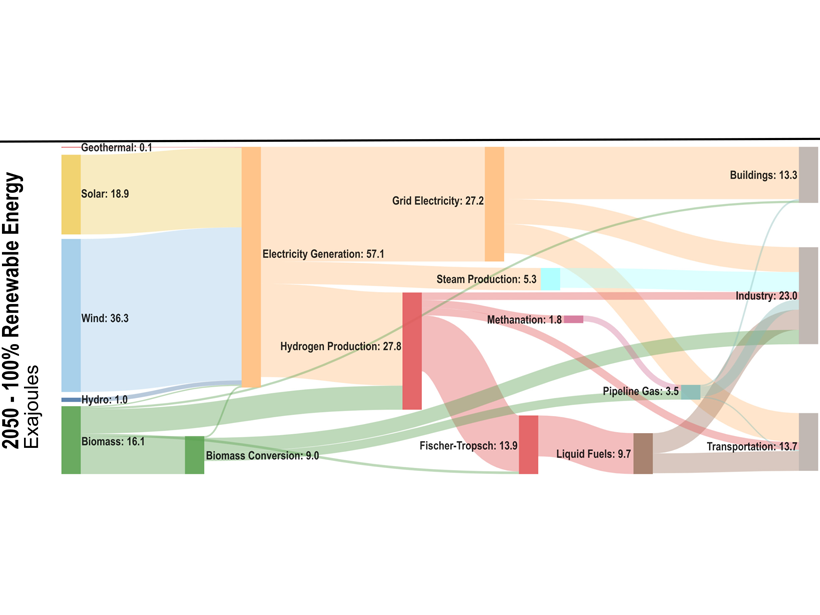Source: AGU Advances
Staying within a 1.5°C global warming limit will require transformation of our economy to net-zero emissions by 2050, which seems like an enormously ambitious goal. And yet, with new in-depth modeling analysis, Williams et al. [2021] illuminate several technologically and economically feasible pathways to this required deep decarbonization. All pathways require enhanced energy efficiency, decarbonized electricity, electrification, and carbon capture. Interestingly, a modest role for natural gas in 2050 to ensure continuous reliability of electricity supplies is part of the least-cost pathway that still meets the emissions goals. Demonstrating the feasibility of these urgently needed transitions could not come at a more important time, as discussions on appropriate policy instruments to speed the journey to climate stabilization will be front and center as the U.S. rejoins the Paris Climate Accords. Bataille [2021] offers further context for these proposed solutions in a companion Viewpoint.
Citation: Williams, J., Jones, R., Haley, B., Kwok, G., Hargreaves, J., Farbes, J. & Torn, M. [2021]. Carbon-Neutral Pathways for the United States. AGU Advances, 2, e2020AV000284. https://doi.org/10.1029/2020AV000284
—Eric A. Davidson, Editor, AGU Advances
Text © 2021. The authors. CC BY-NC-ND 3.0
Except where otherwise noted, images are subject to copyright. Any reuse without express permission from the copyright owner is prohibited.

